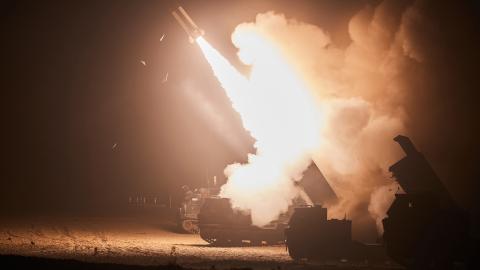Executive Summary
Energetic materials are critical chemicals that release huge amounts of energy in a very short amount of time. Energetics come in three main forms: explosives, which create the lethal effects in warheads; propellants, which produce thrust for missiles and rockets; and pyrotechnics, such as fireworks, which illuminate or mark targets for military and civilian applications. Nearly every weapon on the modern battlefield, from small arms to missiles to munitions, relies on some form of energetic materials. Improvements in energetics can offer significant benefits on the battlefield. In some cases, better compounds can boost the range of missiles by 40 percent or more—allowing the targeting of an adversary from a safer distance—while also improving lethality and decreasing munition size.
These advantages can help the US military realize many of its operational concepts, such as those developed to counter the People’s Republic of China (PRC). China’s armed forces, the People’s Liberation Army (PLA), aims to prevent the US military from operating near its shores by fielding thousands of anti-ship missiles. This concept is often referred to as an anti-access/area-denial (A2/AD) strategy. If China’s leaders act on their stated intention to invade the island of Taiwan, denying the PLA this objective would require large numbers of long-range, precision-guided munitions fired from outside the A2/AD “bubble,” coupled with other platforms that could penetrate the PLA’s defenses with powerful munitions. These types of US responses depend on energetics and the munitions that use these compounds. Since the end of the Cold War, however, the industrial base for munitions has grown increasingly brittle as innovation and investments in energetics have stagnated. Although the United States developed key compounds like CL-20—one of the world’s most powerful non-nuclear explosives—in the late 1980s, the US military still overwhelmingly uses the same energetic materials it deployed during World War II.1 Moreover, recent assessments of the industrial base have found that the DoD imports roughly a third of its energetic materials from foreign sources, with a significant portion of these sourced from China or other countries.2 For instance, one expert we spoke with stated that most trinitrotoluene (TNT) in the explosive fill of common US bombs comes from foreign sources. Other challenges include an aging network of twentieth-century production facilities, a broken business model that discourages innovation and investment, a shrinking workforce, and stifling regulations.
Fixing the industrial base for munitions and energetic materials will require a national strategy that includes the following steps:
• Provide clear lines of authority and responsibility within the DoD for the munitions and energetics enterprise. Authority for the munitions industrial base is fragmented across dozens of entities within the Department of Defense. Policymakers should establish a central regulatory and investment authority in the DoD, and then rework safety and acquisition regulations to prioritize performance.
• Invest in munitions, energetics, and precursor chemical production to send a clear demand signal to the private sector. Today’s industrial base contains hundreds of bottlenecks and single points of failure, and it lacks surge capacity in case of a crisis. The DoD also lacks a clear pathway to deploy advanced energetics, and an inconsistent demand signal for munitions makes private companies hesitant to commit more money.
• Drive innovation in energetics testing and evaluation, discovery of materials and concepts, and manufacturing processes. Adjacent technologies, including artificial intelligence and machine learning, plus advanced manufacturing techniques, have the potential to be game-changing for energetic materials. If paired with sufficient research and development funding and investment in integrated modeling and simulation, the DoD could advance energetic breakthroughs.

















